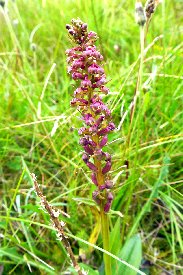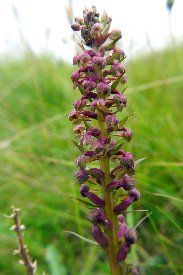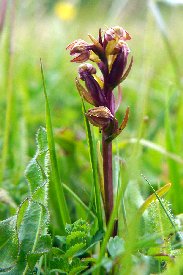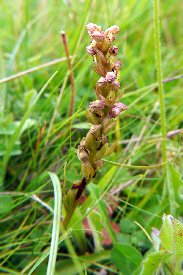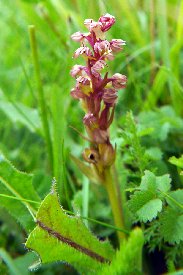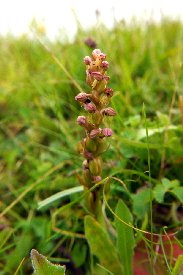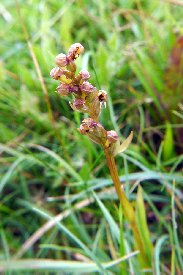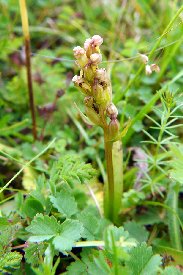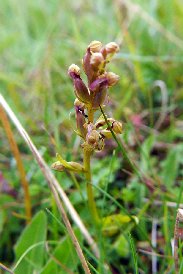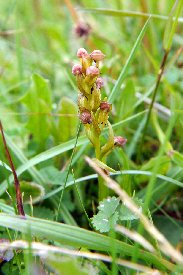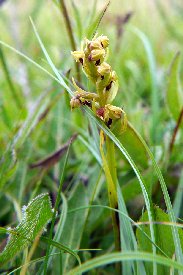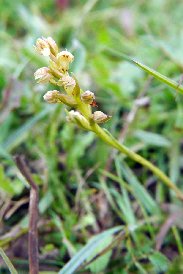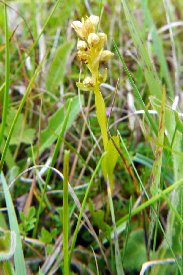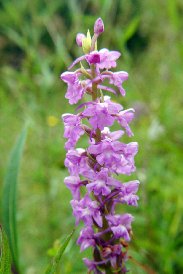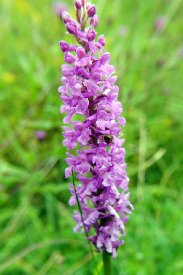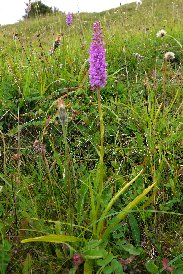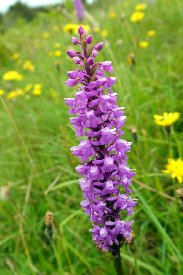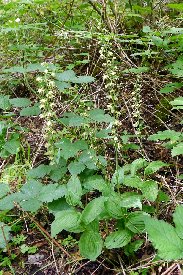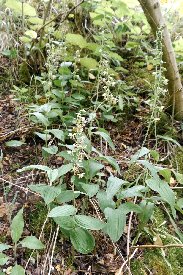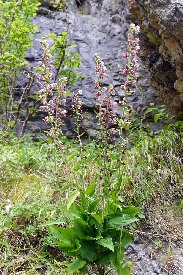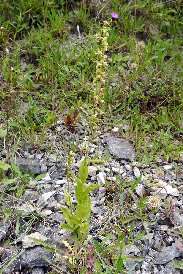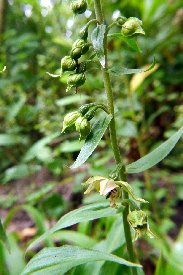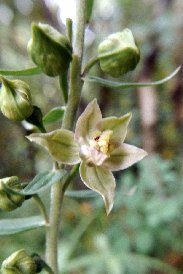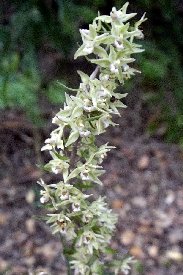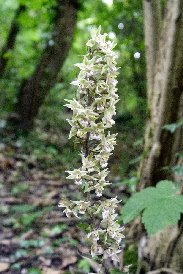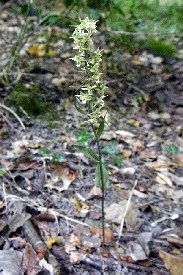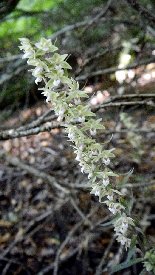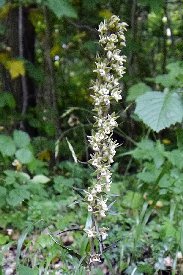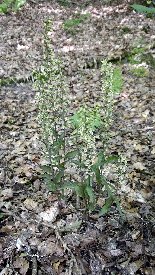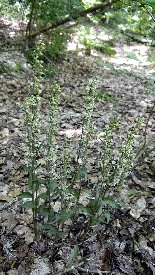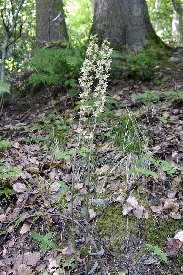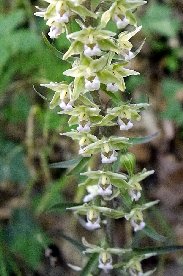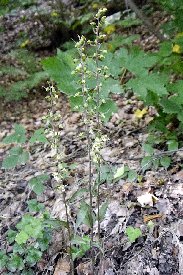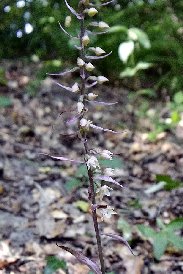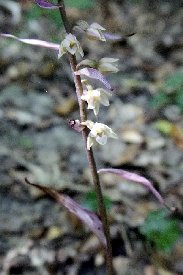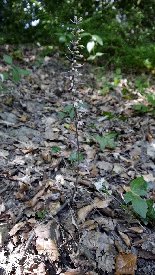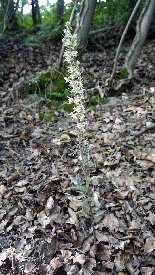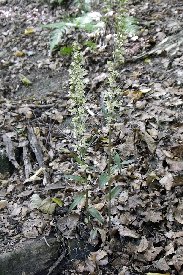|
|
|||||||||||||
|
|
|||||||||||||
 |
|
E. helleborine study week 3, 2nd August 2020 Unfortunately nothing exciting to report today, so I will not bore you with bog standard BLH photos. Those at Hoseley are largely going over, whilst those at Nant-y-Ffrith are not yet generally in full flower. Minera Quarry, 4th August 2020 I respond with aclarity on receiving two separate messages about Frog Orchids flowering this late in the year. Despite the number of times we have been to the quarry there are areas we have not yet covered, and these were growing in one of those. Even armed with spot-on grid references it can still be difficult locate smaller Frog Orchids or a single large specimen - but we manage it. The single large specimen just has to be the most spectacular Frog Orchid I have ever seen. It stands alone and some 30cm tall. And it is just so heavily pigmented. One could excuse the first discoverer of this for thinkig it was a new species of orchid. In the absence of no-one else doing similar I have decided to name this the Bullfrog Orchid. It certainly deserves such an epithet. The other Frog Orchids live a couple of hundred metres away in a scattered group. They are but 4-7 cm tall, and show a remarkable range of colour and appearance; so much so I have probably overdone it illustrating them on this page. No two seem really alike, but they do have one thing in common. The lip is invariably pale coloured. They are quite comparable to the Frog Orchids seen last month at the two sites down in Hampshire, even down to a bright coral pink one. Not only does their small size make them hard to find, but their variability means you cannot really get yur eye in on colour and form. Now I have to ask myself how come this site has one population of essentially unpigmented Frog Orchids that flower in May, and another coloured population more like those seen elsewhere in more southerly locations flowering in August? For an explanation I will take the two sub-species of Burnt Orchid as an example - different flowering times and some minor morphological differences there, plus some genetic data that allows the two populations to be two sub-species. I suspect that no genetic work has been done on the two Minera populations, but if it had then we could have two Frog Orchid species in the U.K. After all this excitement regarding Frog Orchids I am nearly forgetting that Minera still has plenty to offer in August. For example there is still plenty of life left in the Marsh Fragrant Orchids, and we find several spots in this new area where they abound. Really delightful spots where you can just sit and admire the flora and views for a while. And then there are the Broad-leaved Helleborines which are currently at their best overall right now. It is interesting to note the differences between those beneath the trees in the first two photos and those growing in the open beneath the quarry rock face. The latter have leaves concentrated towards the base of the stem, are rather more pointed, and face upwards at 45 degrees. Could I be suggesting that these latter photos show neerlandica types? I am not afraid of making controversial suggestions if they stimulate some lively, constructive debate. That variety is currently seen as an ecotype favouring sand dunes in South Wales and the North Sea coast of continental Europe. It has been reported that normal BLH can take on a neerlandica form on the dunes when trees they grew under were removed. Hence ecotype rather than a sub-species or whatever. Perhaps other populations have that ability when growing in open situations? Epigenetics is still relatively in its infancy, but can provide answers as to how the genetic code of a plant can combine with environmental factors to help survival and in creating different morphological characteristics. Methylation of certain DNA bases within a gene or its promoter regions can effectively silence a gene without altering the genetic code. Changes to the actual coiling of the DNA within a chromosome may have the same outcome. These aterations are heritable. E. helleborine study week 4, 9th August 2020 In previous visits to Nant-y-Ffrith during tis study I have been disappointed to not see the plants that have a MADS gene mutation resulting in large globular buds and multiple reproductive parts within each flower. I now see why. It is only this week that the buds are taking on that globular appearance and only a small number of flowers have actually opened. However, this has allowed a further observation. The flower opening does not follow the usual strict bottom first rule. Coalbrookdale, 10th August 2020 (SJ 66924 03981) (SJ 66796 04289) As we arrive early and it promises to be a hot day we decide to do the more strenuous walk first. Despite the post-Covid relaxations the car park is quite empty and Ironbridge looks virtually deserted! Up the steep narrow road that leads to Paradise, bearing off to take the woodland track that slowly rises up to Church Lane. All the good Violet Helleborines are in good flower, though one spike has been picked. In all we count 23 spikes on this side of the dale which is perhaps a record. Spotting them is made easier in today's light, where they seem almost spectral; glowing in the gloom. Back over the other side on Coach Road we find a few more right beside where we park. Then its a little scramble up to the clearing where the clump grows; 11 spikes this year. I decide not to continue up the bank to the woodland walk, and opt for the easy option along the road. Again there are good numbers of VH where We expect them to be. I have been told that the `near` Var rosea has not been nibbled away this year, and from the road there it is - in what is perhaps the hardest place to get near to it. Back to the steps and edge along the steep slope looking for a roadside tree stump we are using as a marker. This plant is not really out yet, but is in fine condition. There is another group of 6 spikes neaby, and so the Captains Wood count is 45 spikes, making 68 in total. This area must be counted as a premier site for Violet Helleborines in the whole of the U.K.
|
|
|
||||||||||||||
